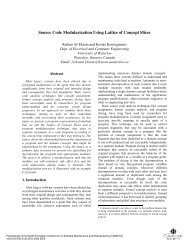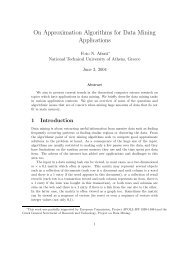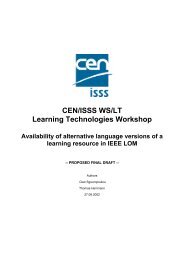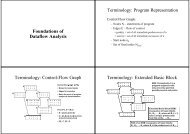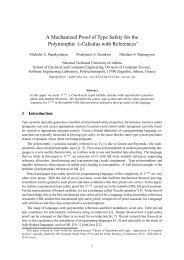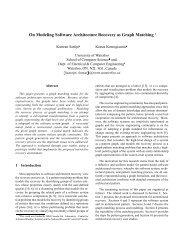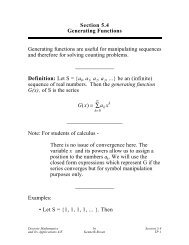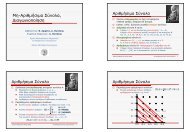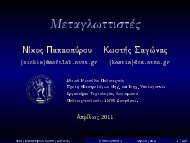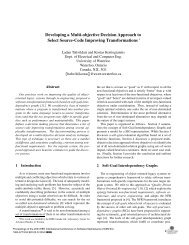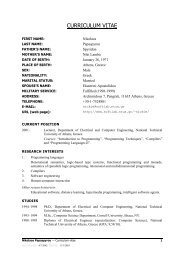Manual
Manual
Manual
Create successful ePaper yourself
Turn your PDF publications into a flip-book with our unique Google optimized e-Paper software.
72 Bison 2.3<br />
term: ’(’ expr ’)’<br />
| term ’!’<br />
| NUMBER<br />
;<br />
Suppose that the tokens ‘1 + 2’ have been read and shifted; what should be done If<br />
the following token is ‘)’, then the first three tokens must be reduced to form an expr.<br />
This is the only valid course, because shifting the ‘)’ would produce a sequence of symbols<br />
term ’)’, and no rule allows this.<br />
If the following token is ‘!’, then it must be shifted immediately so that ‘2 !’ can be<br />
reduced to make a term. If instead the parser were to reduce before shifting, ‘1 + 2’ would<br />
become an expr. It would then be impossible to shift the ‘!’ because doing so would produce<br />
on the stack the sequence of symbols expr ’!’. No rule allows that sequence.<br />
The look-ahead token is stored in the variable yychar. Its semantic value and location,<br />
if any, are stored in the variables yylval and yylloc. See Section 4.4 [Special Features for<br />
Use in Actions], page 68.<br />
5.2 Shift/Reduce Conflicts<br />
Suppose we are parsing a language which has if-then and if-then-else statements, with a<br />
pair of rules like this:<br />
if_stmt:<br />
IF expr THEN stmt<br />
| IF expr THEN stmt ELSE stmt<br />
;<br />
Here we assume that IF, THEN and ELSE are terminal symbols for specific keyword tokens.<br />
When the ELSE token is read and becomes the look-ahead token, the contents of the<br />
stack (assuming the input is valid) are just right for reduction by the first rule. But it<br />
is also legitimate to shift the ELSE, because that would lead to eventual reduction by the<br />
second rule.<br />
This situation, where either a shift or a reduction would be valid, is called a shift/reduce<br />
conflict. Bison is designed to resolve these conflicts by choosing to shift, unless otherwise<br />
directed by operator precedence declarations. To see the reason for this, let’s contrast it<br />
with the other alternative.<br />
Since the parser prefers to shift the ELSE, the result is to attach the else-clause to the<br />
innermost if-statement, making these two inputs equivalent:<br />
if x then if y then win (); else lose;<br />
if x then do; if y then win (); else lose; end;<br />
But if the parser chose to reduce when possible rather than shift, the result would be to<br />
attach the else-clause to the outermost if-statement, making these two inputs equivalent:<br />
if x then if y then win (); else lose;<br />
if x then do; if y then win (); end; else lose;



